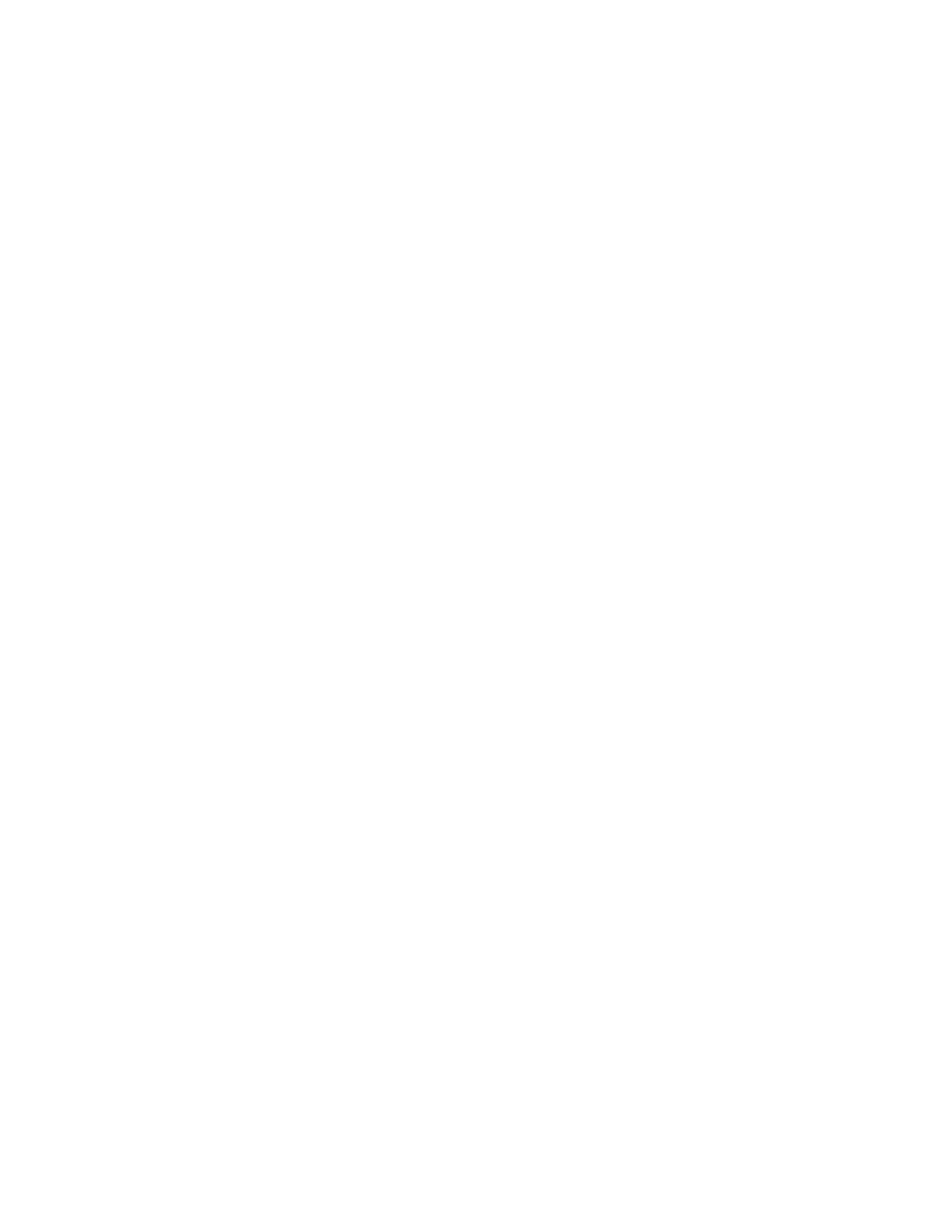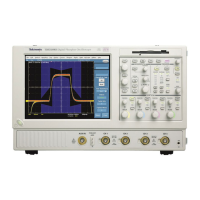314
Set threshold voltages
6. To set the threshold voltages, click the channel threshold
control, and use the multipurpose knobs or pop-up keypad
to set each threshold.
Define logic
7. Select the Boolean logic function for the combination of the
input channels. The instrument will trigger on a clock edge
when the input waveforms match the specified logic pattern.
(The Pattern Type controls do not appear on this control
window for 2-channel instruments.)
See Pattern Triggers on page 241 for definitions of the logic
functions for pattern triggers.
Set trigger criteria
8. Use the Trigger When Pattern selection to determine when
the instrument should trigger. Select True to trigger the
instrument when the logic patterns go true. Select False to
trigger the instrument when the logic patterns go false.
For simplest operation, leave this control set to True. Setting the
control to False complements the output of the chosen pattern
function (for example, from AND to NAND or NOR to OR).
Set mode and holdoff
9. Mode and holdoff can be set for all standard trigger types.
Refer to trigger mode on page 137 and Set holdoff on page
122 to learn more about trigger mode and holdoff.
Triggering on Setup/Hold Time Violations
Use this procedure to detect and trigger on setup and hold time violations. The setup and hold times define
a violation region relative to a clock. Data is considered to be invalid in the violation region.
Select setup/hold
triggering
1. Push the front-panel ADVANCED button.
2. On the Trigger Setup control window, select the A Event
tab.
3. Click Setup/Hold.
Select the data source
4. To select the channel that is connected to the data signal,
click Data Source, and select the source from the list. Do
not select the same channel for both the data and clock
sources.
Select the clock source
and set the edge
5. To select the channel that is connected to the clock signal,
click Clock Source, and select the source from the list.
Do not select the same channel for both the data and clock
sources.

